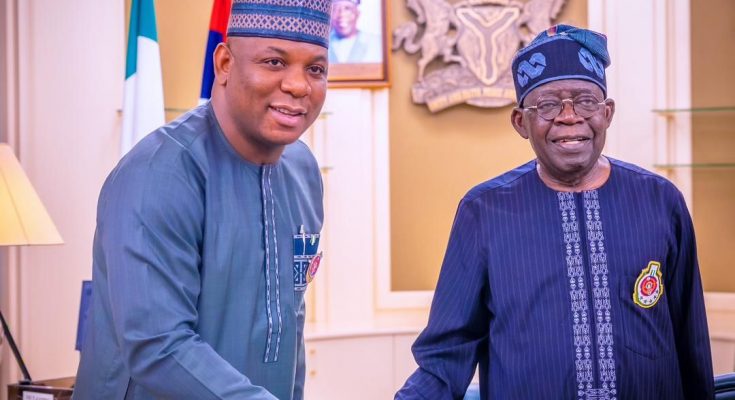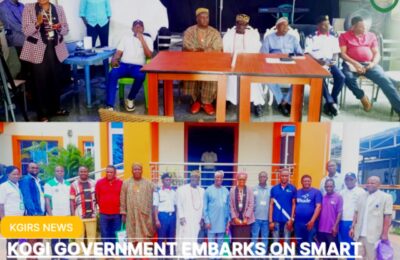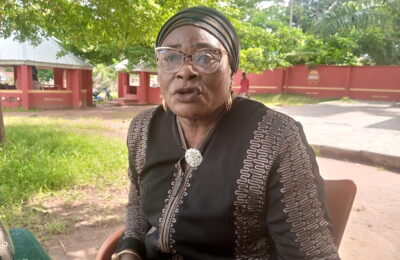When it comes to the matter of Ajaokuta, it can be incredibly frustrating to witness the facts on the ground. These facts should ideally facilitate the work of those in charge, yet they seem to consistently veer in the opposite direction.
This leaves one wondering what knowledge, or perhaps ignorance or concealment, could be responsible for these zig-zag movements spanning over four decades. Such unstable movements are worrisome to those citizens who are concerned about the success of President Bola Ahmed Tinubu and about the industrialization of Nigeria, the Giant of Africa.
Discussing the Ajaokuta Steel calls for technical rumination due to its very nature. However, for the sake of clarity and to ensure this investigation achieve its primary objective – making necessary information available for the realization of the project – this article will remain as straightforward as possible. Therefore, the focus will be on the fundamentals, reviewing past developments briefly, acknowledging current realities, and amalgamating these insights to chart a way forward, particularly under the new leadership at the Ministry of Steel Development. Additionally, all fundamental points raised here are substantiated by evidence, dispelling any notion that they are merely literary exercises, as some have mistakenly perceived after reading the first part of the series, which aimed to dismiss the serious matter at hand.
TPE – The Original Builders
TyazhPrompExport (TPE), the original builders of the Ajaokuta Steel Company Limited (ASCL), designed and constructed the project to 95% technical completion. They undertook the project based on an understanding they had with the Federal Government of Nigeria, primarily utilizing their resources. To progress, they took necessary steps to ensure the raw materials reached the ASCL. However, their efforts did not yield results, and they were subsequently frustrated out of the deal. Coincidentally, the Union of Soviet Socialist Republics (USSR) was disintegrating at the time, eventually leading to the disbandment of TPE. The current states of Russia and Ukraine emerged as the largest out of the fifteen republics that came out of the defunct USSR, with Russia being the prominent one, hence a consortium of companies from the TPE was formed.
Regarding the Ajaokuta Steel Company, This consortium of the original builders comprising companies within the former TPE in Partnership with their Financiers with $12 billion Proof of Funds have presented Expression of Interests (EOI) to the Federal Government of Nigeria (FGN) and ready to operate under the supervision of the Ministry of Steel Development to take the completion and expansion to 5.2 millions as contained in their EOI that would include Flat Steel, Special Steel, Military Hardwares and all the external mining sites. This arrangement would ensure the FGN borrows no money to execute the deal, once given the opportunity for review and mutual understanding. As mentioned earlier, there is evidence to substantiate this claim, and I urge the Honourable Minister in charge to request letters and documents related to this claim particularly from 2022 and 2023. Something may be amiss, but the ministry needs to succeed under the renewed hope agenda of President Bola Ahmed Tinubu.
The original builders are on standby, awaiting a green light since expressing their interest to return and complete what they started. However, one wonders why they are not receiving the appropriate attention. If the government is interested in partnering with the Chinese or other companies, why not embark on a fresh project? Why is everyone fixated on Ajaokuta? The ASCL comprises completely Russian technology with 420 Processing Units (in 49 factories) nearly ready for operation. This requires rehabilitation as already planned by the original builders (Russians) alongside their Financial Partners, taking 18-24 months to start producing 1.35 million tons of Steel, including 400,000 tonnes of Structural Steel in the LSM. As an integrated company, ASCL necessitates extensive rehabilitation across the 420 processing units in the 49 factories, including but not limited to the 1st and 2nd pump houses, sludge pump, and distribution pump houses 3 and 4, overhauling of the pertaining circuit breakers and transformers at the Light Section Mill (LSM), reheating of the furnace refractories, and replacement of both roller assemblies (left and right roller stands). These are some of the basics outlined by the original builders as part of the plans for the comprehensive rehabilitation, reactivation, and commissioning of the ASCL.
Why Operating the LSM is Not Feasible now Outside the Original Plan
The ongoing efforts by the ministry, as presented through the media, are not feasible. Even if implemented, they are not sustainable due to the realities on the ground. The current cost of 400,000 tonnes of billet is $600c&f/billet for optimal annual commissioning of LSM, amounting to $240 million, with other operational costs of $120 million per year, totaling $380 million to operate only the LSM per year. Convert this to Naira, and one will see the result. It begs the question of whether the envisaged N35 billion can make any difference or if it will simply go down the drain from the onset. Let’s set this aside for now.
Should the Ministry of Steel Development proceed to commence operation of the LSM today, several significant questions arise. Firstly, which company will operate it for the production of the proposed iron rods? Is the Ministry aware that workers of Reprom Nigeria Limited, which undertook a partial rehabilitation of the Light Section Mill, are in court with the company, the Ministry, and the Federal Government for non-payment for a period of about 30 months? Is the Ministry also aware that the Technical Partners to Reprom company in the partial rehabilitation process were also not paid their entitlements for the same period and will not return to the same LSM? So, will the ministry train new personnel or settle out of court and return all to the LSM? In January 2024, it was reported that TCN planned disconnection of ASCL from the national grid over a debt of over N33 billion. Has this been settled, or where will power be generated from?
What is most concerning in all of this is the fact that with a comprehensive approach by the company with the original builders, all these challenges would be overcome, and the ASCL would be set on the path to optimal results, as originally designed. So, why all these efforts to work on a section of ASCL at an exorbitant, unsustainable cost (using loans with either interests or stakes based on the understanding reached or to be reached), when it is possible to execute the entire project with those who designed it and their financial partners? With them, the government only needs to review and enter a profitable understanding with the company and monitor to ensure they adhere to the terms of the agreement.
Furthermore, is the Ministry not aware of past attempts that failed, so as to guide them on the right paths to follow today? In 2000-2001, ASFERRO’s attempt to operate some units of the Engineering Workshops failed; in 2003-2004, SOLGAS Limited’s 10-year concession failed; in 2004-2007, Global Infrastructures Limited’s 10-year concession failed; and from 2013-2017, REPROM Limited’s effort for billet conversion at LSM failed. All these past attempts failed technically because Ajaokuta Steel Complex is an Integrated Network of 420 operating Units in 49 Shops, including the Engineering Workshops, with common upstream power, utilities, and facilities that were installed in the 1980s and 1990s. These urgently need comprehensive and holistic integrated revisioning, as most of them have been exposed to environmental and incipient deterioration due to non-utilization.
As we read, the EOI before the Federal government is for total rehabilitation of ASCL and ltakpe for commencement of full operations within 18- 24 months backed up with enabling funds.This will bring the 5 lines in the LSM into full production in 9 months including the production of the military hard ware. But, considering the current path of the ministry, there is nothing they can do to achieve this under their own programme of iron rod production. Again, this bring back the critical questions of why do the Ministry prefer the iron rod production programme to the entire rehabilitation of ASCL and ltakpe?
Why do they prefer their “collegiate” rehabilitation approach which has no completion time frame to the total rehabilitation of ASCL and ltakpe which has a completion time frame of 18 – 24 months?
How can the Ministry reduce the rehabilitation of ASCL and ltakpe to ordinary iron rod production? Or, is iron rod now the bed rock of the nation’s industrialization or the total completion of ASCL and ltakpe?
Remember, the President during his campaign visit to Kogi State promised Nigerians the total rehabilitation and operations of ASCL and ltakpe and that is what the people are waiting for. Any iron rod production programme is a distraction as iron rod production can be achieved 6 months into the main rehabilitation programme as detailed out in the EOI submitted by the original builders. And, ideally, this is what the ministry should be focused on and not returning to the old ways that failed and will still fail in view of the realities on ground.
History Beckons
A review of developments in the steel sector so far indicates a simple fact – history may be calling on the Honourable Minister to eternally register his name positively in the sector. Considering that the Ministry he oversees today started off as a standalone entity (Ministry of Steel Development) during the Shagari government and made tremendous progress. The standalone ministry was later amalgamated, leading to stagnation in ASCL, despite achieving landmark accomplishments under a Minister from the then host state. Today, the Tinubu administration has returned the ministry to a standalone status and entrusted it to a Minister from the host state. If this is a coincidence, then it could be history calling on the young Honourable Minister to rise and complete the mission of the Ajaokuta Steel Company. He must review his journey thus far and assess the various options available to him to make the right decision quickly. This decision will either elevate him or consign him to the stage of those who sang those boring songs in the past.
ONOJA OKPANACHI
President, Development Journalism Initiative








